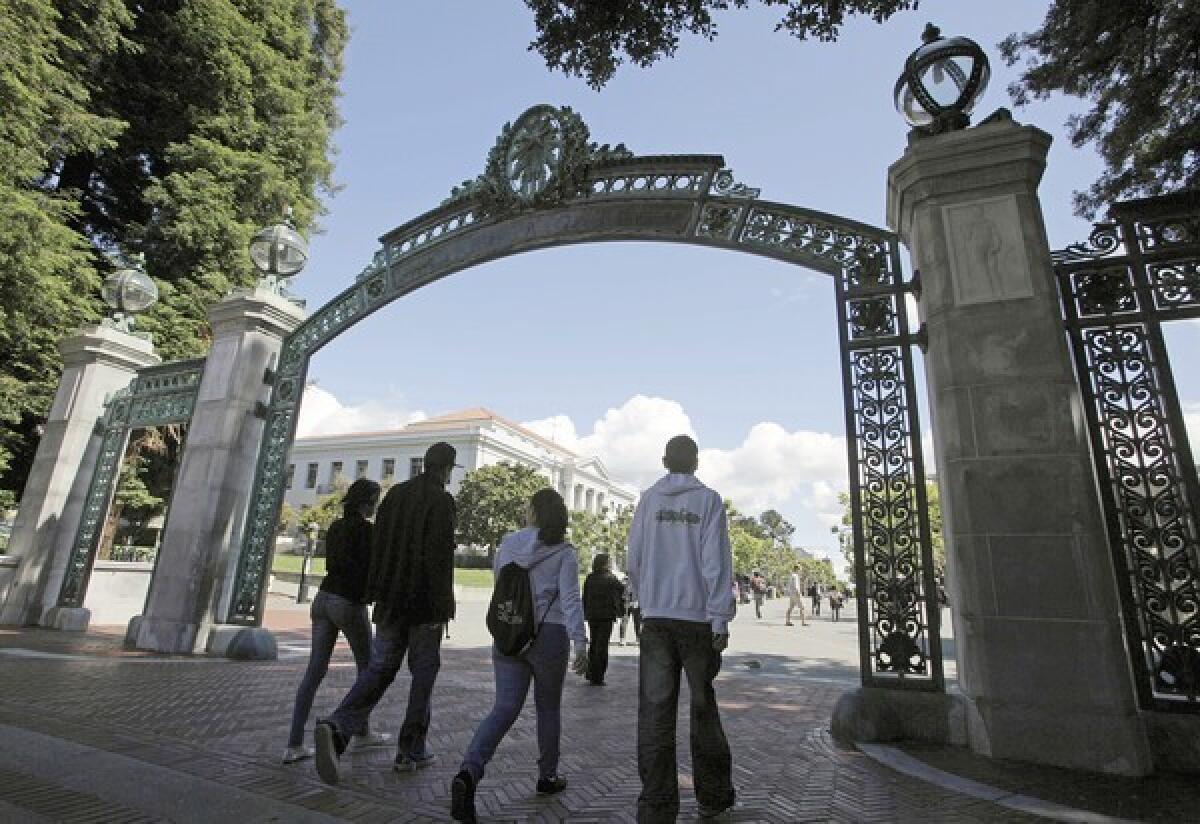More collaboration needed to fix higher education, experts say

- Share via
California is falling short in preparing and graduating college students and must do more to coordinate higher education policy, according to two new reports released Thursday that call for more collaboration between the governor, Legislature and education leaders.
The reports come in the wake of a pledge to do just that by leaders of the state’s three higher education segments in a rare joint appearance Wednesday before the UC regents.
UC President Janet Napolitano, Cal State Chancellor Timothy White and community colleges Chancellor Brice W. Harris agreed on the need to reform and strengthen the state’s 1960 Master Plan for Higher Education, which set differing missions for each system.
The master plan was seen as a model, efficiently churning out millions of college graduates and bolstering California’s standing as a world economic and education leader.
But the higher education system has fallen into mediocrity, according to a report prepared by the Institute for Higher Education Leadership & Policy at Cal State Sacramento.
California’s high school graduation rate is 68%, ranking 37th among the states, and more than 60% of high school graduates fail to complete courses required to enroll in the state’s four-year public universities, according to researchers.
Tuition and fees, meanwhile, have increased substantially over the last decade -- at a rate of 139% at UC and 157% at Cal State, compared to a national rate of 91%.
The state ranks first in the number of freshmen who return as sophomores and has a higher than average graduation rate for full-time first–time students, but it ranks among the lowest of states in the number of credentials and degrees produced per 100 undergraduates at public two-year schools.
The trends are not likely to improve without a clearly thought out agenda, the report said.
“The analysis is really eye opening in checking the pulse of where we are right now in higher education,” said Michele Siqueiros, executive director of the nonprofit Campaign for College Opportunity, which commissioned the report.
“The master plan was revolutionary, innovative and visionary for its time, but it’s more than 50 years old and we are a different kind of state, one that’s more diverse and that’s suffered through an incredible recession that decreased funding for higher education, impacted capacity and the cost for students.”
Siqueiros said that lawmakers and education leaders need to address the question of how to increase capacity and how many college graduates are needed to meet future workforce demands.
One strategy may be creation of an oversight body, recommended in a report by the nonprofit California Competes.
California is one of the few states without such a central panel to identify higher education needs, according to the report. It proposes creation of an autonomous citizens’ Higher Education Investment Board that would collect data and help inform policy decisions by the governor, Legislature and leaders of public and private institutions.
Members would be appointed by the governor, so as not to be influenced by the college systems, and the board would be financed by a fee to the colleges rather than from state general funds.
The chances for such a body may be just right, suggested California Competes Director Robert Shireman. Gov. Jerry Brown, who attended the regents’ meeting, has called on UC and Cal State to begin reporting performance outcomes and develop more innovative ways to deliver instruction.
Assembly Speaker John A. Pérez (D-Los Angeles) has introduced a bill that would establish a higher education authority, responsible for developing and monitoring postsecondary education goals. The legislation passed the state Assembly and will be considered by the Senate this year.
“This happened to be very well-timed coming after the regents meeting because these are exactly the issues they were discussing,” Shireman said. “We’re not going to be able to meet the state’s needs unless all of the systems are coordinated and work together and connect. They may believe they can coordinate themselves without an entity to help them but history doesn’t suggest that will work very well.”
Pérez agreed.
“This report shines an important light on the need to have a central body whose sole focus is guiding the Legislature, governor and our three higher education segments as we plan and build for the future,” he said.
carla.rivera@latimes.com
Twitter:@CarlaRiveraLat
More to Read
Sign up for Essential California
The most important California stories and recommendations in your inbox every morning.
You may occasionally receive promotional content from the Los Angeles Times.














